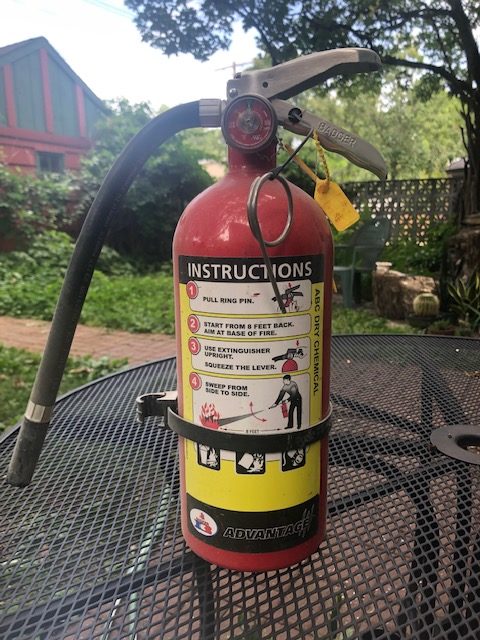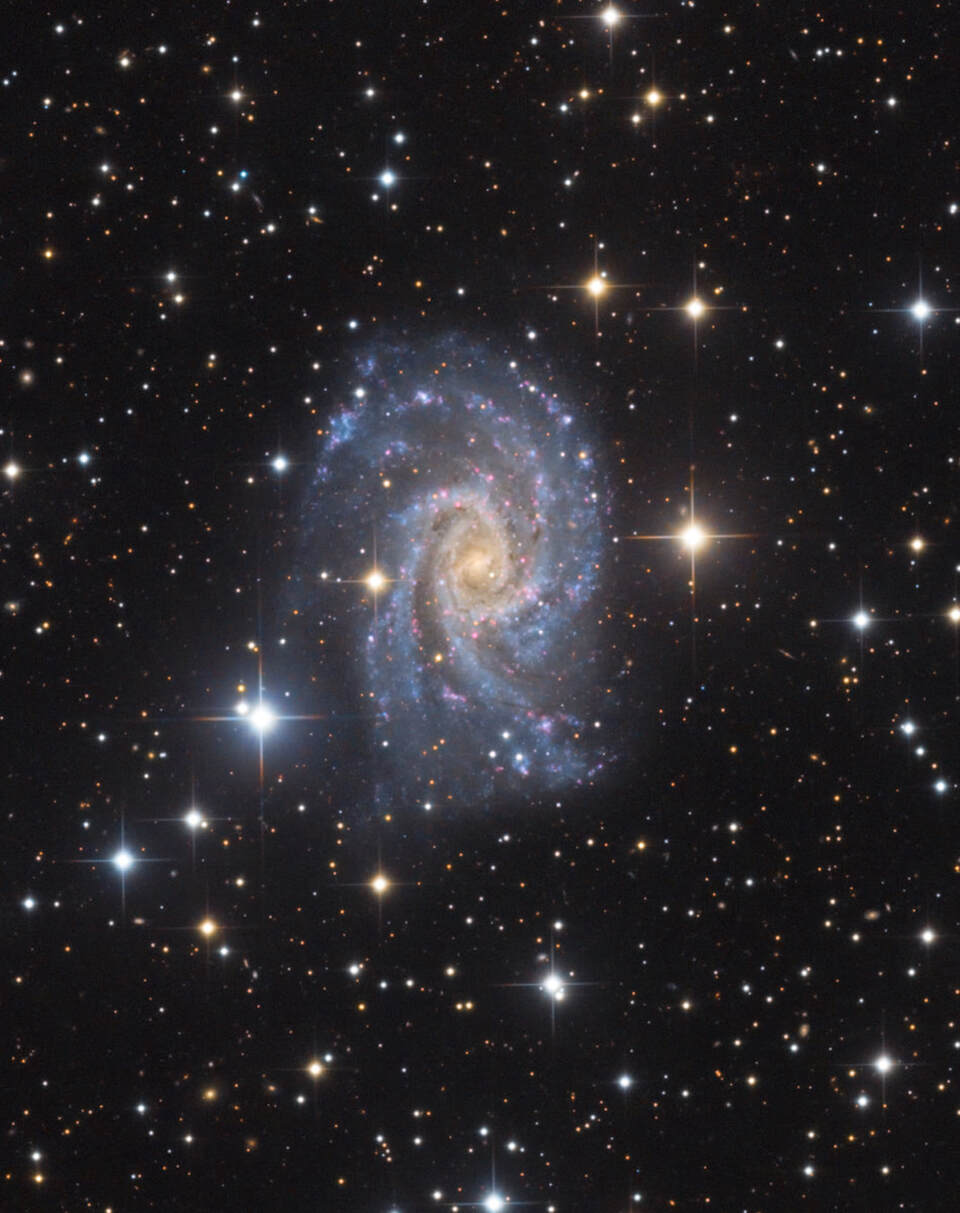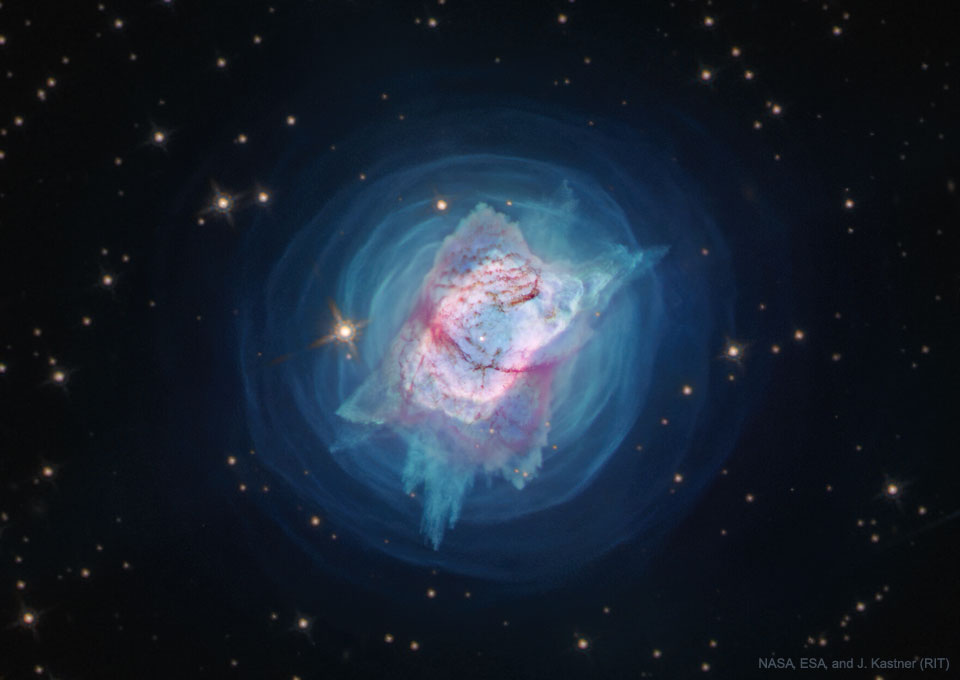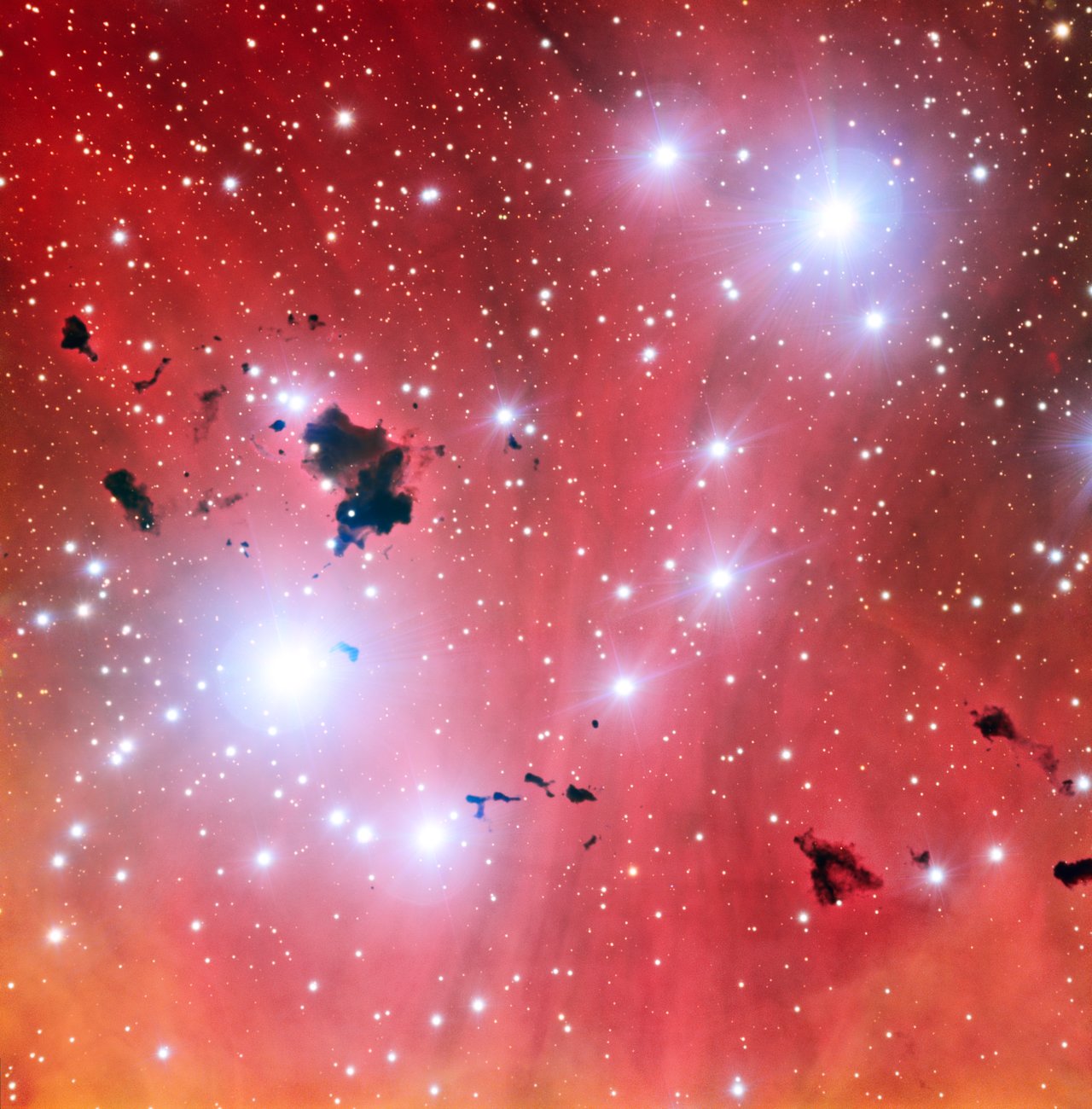Blog
FIRE EXTINGUISHER ALERT
I had a small stove fire in one of my rentals this morning. The tenant rushed down to tell me THERES A FIRE IN APARTMENT! I rushed in couldn’t breath got a N95 it turned black, I grabbed a fire extinguisher and put it out. Then extinguisher emptied out in apt. Just a big mess no one hurt and minimal damages. I did call Farmers Ins and made a claim just in case. So my friends & family please make certain you have a good solid fire extinguisher in your home. I’m buying new units today for all apts! Even called neighbors!

more...
NGC 2835 is an intermediate spiral galaxy located in the constellation Hydra. It is located at a distance of circa 35 million light years from Earth, which, given its apparent dimensions, means that NGC 2835 is about 65,000 light years across. It was discovered by Wilhelm Tempel on April 13, 1884. NGC 2835 is located only 18.5 degrees from the galactic plane.
NGC 2835 is seen nearly face-on. The galaxy features four or five spiral arms, visible in near infrared due to their population II stars. The spiral arms have also numerous HII regions and stellar associations, the larger of which are 5 arcseconds across. Although the galaxy is quite symmetric, the northern arms have HII regions that appear brighter than the southern ones. Also the southern arms appear less developed in their outer parts than the north ones.

Leon “Ndugu” Chancler (/ɪnˈduːɡuː ˈtʃænslər/ in-DOO-goo CHANSS-lər; July 1, 1952 – February 3, 2018) was an American pop, funk and jazz drummer. He was also a composer, producer, and university professor.
Born in Shreveport, Louisiana, on July 1, 1952, Leon Ndugu Chancler was the last child of seven children from the union of Rosie Lee and Henry Nathaniel Chancler. In 1960 the family relocated to Los Angeles, California. Chancler began playing drums when he was thirteen years old. He would publicly reminisce about being asked to leave a classroom for continuously tapping on the desk, only to be later heard tapping on the poles in the hallway. His love for the drums took over while attending Gompers Junior High School and it became his lifelong ambition. He graduated from Locke High School having been heavily involved in playing there with Willie Bobo and the Harold Johnson Sextet. He graduated from California State University, Dominguez Hills with a degree in music education. By then he had already performed with the Gerald Wilson Big Band, Herbie Hancock, and recorded with Miles Davis, Freddie Hubbard, and Bobby Hutcherson.
He recorded as a sideman in jazz, blues, and pop music, including instantly recognizable drums on “Billie Jean” by Michael Jackson. In 1982, he received a Grammy nomination for Best Rhythm & Blues song, for co-writing “Let It Whip” made famous by the Dazz Band. He worked with George Benson, Stanley Clarke, The Crusaders, George Duke, Herbie Hancock, John Lee Hooker, Hubert Laws, Thelonious Monk, Jean-Luc Ponty, Lionel Richie, Kenny Rogers, Patrice Rushen, Santana, Frank Sinatra, Donna Summer, The Temptations, Tina Turner, and Weather Report.
https://www.youtube.com/watch?v=WMLkgtJ3N0w
more...Rashied Ali, born Robert Patterson (July 1, 1933 – August 12, 2009) was an American free jazz and avant-garde drummer best known for playing with John Coltrane in the last years of Coltrane’s life.
Patterson was born and raised in Philadelphia, Pennsylvania. His family was musical; his mother sang with Jimmie Lunceford. His brother, Muhammad Ali, is also a drummer, who played with Albert Ayler. Ali, his brother, and his father converted to Islam.
Starting off as a pianist he eventually took up the drums, via trumpet and trombone. He joined the United States Army and played with military bands during the Korean War. After his military service, he returned home and studied with Philly Joe Jones, then toured with Sonny Rollins.
more...James Henry Cotton (July 1, 1935 – March 16, 2017) was an American blues harmonica player, singer and songwriter, who performed and recorded with many of the great blues artists of his time and with his own band. He played drums early in his career but is famous for his harmonica playing.
Cotton began his professional career playing the blues harp in Howlin’ Wolf‘s band in the early 1950s. He made his first recordings in Memphis for Sun Records, under the direction of Sam Phillips. In 1955, he was recruited by Muddy Waters to come to Chicago and join his band. Cotton became Waters’s bandleader and stayed with the group until 1965. In 1965 he formed the Jimmy Cotton Blues Quartet, with Otis Spann on piano, to record between gigs with the Muddy Waters band. He eventually left to form his own full-time touring group. His first full album, on Verve Records, was produced by the guitarist Mike Bloomfield and the singer and songwriter Nick Gravenites, who later were members of the band Electric Flag.
In the 1970s, Cotton played harmonica on Muddy Waters’ Grammy Award–winning 1977 album Hard Again, produced by Johnny Winter.
Cotton was born in Tunica, Mississippi. He became interested in music when he first heard Sonny Boy Williamson II on the radio. He left home with his uncle and moved to West Helena, Arkansas, finding Williamson there. For many years Cotton claimed that he told Williamson that he was an orphan and that Williamson took him in and raised him, a story he admitted in recent years is not true. However, Williamson did mentor Cotton during his early years. Williamson left the South to live with his estranged wife in Milwaukee, Wisconsin, leaving his band in Cotton’s hands. Cotton was quoted as saying, “He just gave it to me. But I couldn’t hold it together ’cause I was too young and crazy in those days an’ everybody in the band was grown men, so much older than me.”
Cotton played drums early in his career but is famous for his harmonica playing. He began his professional career playing the blues harp in Howlin’ Wolf‘s band in the early 1950s. He made his first recordings as a solo artist for Sun Records in Memphis in 1953. In 1954, he recorded an electric blues single “Cotton Crop Blues”, which featured a heavily distorted power chord–driven electric guitar solo by Pat Hare. Cotton began working with the Muddy Waters Band around 1955. He performed songs such as “Got My Mojo Working” and “She’s Nineteen Years Old”, although he did not play on the original recordings; Little Walter, Waters’s long-time harmonica player, played for most of Waters’s recording sessions in the 1950s. Cotton’s first recording session with Waters took place in June 1957, and he alternated with Little Walter on Waters’s recording sessions until the end of the decade.
more...William James Dixon (July 1, 1915 – January 29, 1992) was an American blues musician, vocalist, songwriter, arranger and record producer. He was proficient in playing both the upright bass and the guitar, and sang with a distinctive voice, but he is perhaps best known as one of the most prolific songwriters of his time. Next to Muddy Waters, Dixon is recognized as the most influential person in shaping the post–World War II sound of the Chicago blues.
Dixon’s songs have been recorded by countless musicians in many genres as well as by various ensembles in which he participated. A short list of his most famous compositions includes “Hoochie Coochie Man“, “I Just Want to Make Love to You“, “Little Red Rooster“, “My Babe“, “Spoonful“, and “You Can’t Judge a Book by the Cover“. These songs were written during the peak years of Chess Records, from 1950 to 1965, and were performed by Muddy Waters, Howlin’ Wolf, Little Walter, and Bo Diddley; they influenced a generation of musicians worldwide.
Dixon was an important link between the blues and rock and roll, working with Chuck Berry and Bo Diddley in the late 1950s. His songs have been adapted by numerous rock artists; Jeff Beck, Canned Heat, Cream, the Doors, Led Zeppelin, the Rolling Stones, and Steppenwolf all featured at least one of his songs on their debut albums.
He received a Grammy Award and was inducted into the Blues Hall of Fame, the Rock and Roll Hall of Fame, and the Songwriters Hall of Fame.
Dixon was born in Vicksburg, Mississippi, on July 1, 1915. He was one of fourteen children. His mother, Daisy, often rhymed things she said, a habit her son imitated. At the age of seven, young Dixon became an admirer of a band that featured pianist Little Brother Montgomery. He sang his first song at Springfield Baptist Church at the age of four Dixon was first introduced to blues when he served time on prison farms in Mississippi as a young teenager. Later in his teens, he learned how to sing harmony from a local carpenter, Theo Phelps, who led a gospel quintet, the Union Jubilee Singers, in which Dixon sang bass; the group regularly performed on the Vicksburg radio station WQBC. He began adapting his poems into songs and even sold some to local music groups.
more...NGC 7027 is one of the smallest, brightest, and most unusually shaped planetary nebulas known. Given its expansion rate, NGC 7027 first started expanding, as visible from Earth, about 600 years ago. For much of its history, the planetary nebula has been expelling shells, as seen in blue in the featured image. In modern times, though, for reasons unknown, it began ejecting gas and dust (seen in red) in specific directions that created a new pattern that seems to have four corners. These shells and patterns have been mapped in impressive detail by recent images from the Wide Field Camera 3 onboard the Hubble Space Telescope. What lies at the nebula’s center is unknown, with one hypothesis holding it to be a close binary star system where one star sheds gas onto an erratic disk orbiting the other star. NGC 7027, about 3,000 light years away, was first discovered in 1878 and can be seen with a standard backyard telescope toward the constellation of the Swan (Cygnus).

Stanley Clarke (born June 30, 1951) is an American bassist, film composer and founding member of Return to Forever, one of the first jazz fusion bands. Clarke gave the bass guitar a prominence it lacked in jazz-related music. He is the first jazz-fusion bassist to headline tours, sell out shows worldwide and have recordings reach gold status.
Clarke is a 5-time Grammy winner, with 15 nominations, 3 as a solo artist, 1 with the Stanley Clarke Band, and 1 with Return to Forever.
A Stanley Clarke electric bass is permanently on display at The Smithsonian National Museum of African American History and Culture in Washington, D.C.
Clarke was born in Philadelphia. His mother sang opera around the house, belonged to a church choir, and encouraged him to study music. He started on accordion, then tried violin. But he felt awkward holding such a small instrument in his big hands when he was twelve years old and over six feet tall. No one wanted the acoustic bass in the corner, so he picked it up. He took lessons on double bass at the Settlement Music School in Philadelphia, beginning with five years of classical music. He picked up bass guitar in his teens so that he could perform at parties and imitate the rock and pop bands that girls liked.
Clarke attended the Philadelphia Musical Academy (later known as the Philadelphia College of the Performing Arts, and ultimately as the University of the Arts, after a merge with the Philadelphia College of Art) and after graduating moved to New York City in 1971. His recording debut was with Curtis Fuller. He worked with Joe Henderson and Pharoah Sanders, then in 1972 with Stan Getz, Dexter Gordon, and Art Blakey, followed by Gil Evans, Mel Lewis, and Horace Silver.
more...Andrew Hill (June 30, 1931 – April 20, 2007) was an American jazz pianist and composer.
Jazz critic John Fordham described Hill as a “uniquely gifted composer, pianist and educator” although “his status remained largely inside knowledge in the jazz world for most of his career.” Hill recorded for Blue Note Records for nearly a decade, producing a dozen albums.
Andrew Hill was born in Chicago, Illinois (not in Port-au-Prince, Haiti, nor was he born in 1937, as was reported by many earlier jazz reference books), to William and Hattie Hill. He had a brother, Robert, who was a singer and classical violin player. Hill took up the piano at the age of thirteen, and was encouraged by Earl Hines. As a child, he attended the University of Chicago Experimental School. He was referred by jazz composer Bill Russoto Paul Hindemith, with whom he studied informally until 1952.
While a teenager, he performed in rhythm and blues bands and with touring jazz musicians, including Charlie Parker and Miles Davis. Hill recalls some of his experience as a youngster, during a 1964 interview with Leonard Feather: “I started out in music as a boy soprano, singing and playing the accordion, and tap dancing. I had a little act and made quite a few of the talent shows around town from 1943 until 1947. I won turkeys at two Thanksgiving parties at the Regal Theatre,” parties sponsored by the newspaper Chicago Defender, which Hill coincidentally used to sell on the streets.
more...David Kenneth Ritz Van Ronk (June 30, 1936 – February 10, 2002) was an American folk singer. An important figure in the American folk music revival and New York City’s Greenwich Village scene in the 1960s, he was nicknamed the “Mayor of MacDougal Street“.
Van Ronk’s work ranged from old English ballads to blues, gospel, rock, New Orleans jazz, and swing. He was also known for performing instrumental ragtime guitar music, especially his transcription of “St. Louis Tickle” and Scott Joplin‘s “Maple Leaf Rag“. Van Ronk was a widely admired avuncular figure in “the Village”, presiding over the coffeehouse folk culture and acting as a friend to many up-and-coming artists by inspiring, assisting, and promoting them. Folk performers he befriended include Bob Dylan, Tom Paxton, Patrick Sky, Phil Ochs, Ramblin’ Jack Elliott, and Joni Mitchell. Dylan recorded Van Ronk’s arrangement of the traditional song “House of the Rising Sun” on his first album, which the Animals turned into a chart-topping rock single in 1964, helping inaugurate the folk-rock movement. Van Ronk received a Lifetime Achievement Award from the American Society of Composers, Authors and Publishers (ASCAP) in December 1997. He died in a New York hospital of cardiopulmonary failure while undergoing postoperative treatment for colon cancer.
Van Ronk was born in Brooklyn to a family that was “mostly Irish, despite the Dutch name”. He moved from Brooklyn to Queens around 1945 and began attending Holy Child Jesus Catholic School, whose students were mainly of Irish descent. He had been performing in a barbershop quartetsince 1949, but left before finishing high school, and spent the next few years bumming around lower Manhattan and twice shipping out with the Merchant Marine.
more...Lena Mary Calhoun Horne (June 30, 1917 – May 9, 2010) was an American singer, dancer, actress, and civil rights activist. Horne’s career spanned over 70 years, appearing in film, television, and theater. Horne joined the chorus of the Cotton Club at the age of 16 and became a nightclub performerbefore moving to Hollywood.
Returning to her roots as a nightclub performer, Horne took part in the March on Washington in August 1963 and continued to work as a performer, both in nightclubs and on television while releasing well-received record albums. She announced her retirement in March 1980, but the next year starred in a one-woman show, Lena Horne: The Lady and Her Music, which ran for more than 300 performances on Broadway. She then toured the country in the show, earning numerous awards and accolades. Horne continued recording and performing sporadically into the 1990s, disappearing from the public eye in 2000. Horne died of congestive heart failure on May 9, 2010, at the age of 92.
Lena Horne was born in Bedford–Stuyvesant, Brooklyn. She was reportedly descended from the John C. Calhoun family, and both sides of her family were through a mixture of African, Native American, and European descent and belonged to the upper stratum of middle-class, well-educated people. Her father, Edwin Fletcher “Teddy” Horne Jr. (1893–1970).
more...This intriguing new view of a spectacular stellar nursery IC 2944 is being released to celebrate a milestone: 15 years of ESO’s Very Large Telescope. This image also shows a group of thick clouds of dust known as the Thackeray globules silhouetted against the pale pink glowing gas of the nebula. These globules are under fierce bombardment from the ultraviolet radiation from nearby hot young stars. They are both being eroded away and also fragmenting, rather like lumps of butter dropped onto a hot frying pan. It is likely that Thackeray’s globules will be destroyed before they can collapse and form new stars.

More Posts
- The Cosmos with M16
- Eric Dolphy Day
- Lazy Lester Day
- World Music with Obo Addy
- Daily Roots with Bob Marley
- The Cosmos with Fleming 1
- Ernest Ranglin Day
- Billy Drummond Day
- World Music with Lela Tataraidze
- Daily Roots with the Skatalites
- The Cosmos with NGC 6872 & IC 4970
- Paul McCartney Day
- William Hooker Day
- Rudy Rutherford Day
- World Fusion with Manika Kaur
- Daily Roots with the Congos
- Happy Fathers Day 2018
- The Cosmos with RCW 108
- Chuck Rainey Day
- Sing Miller Day